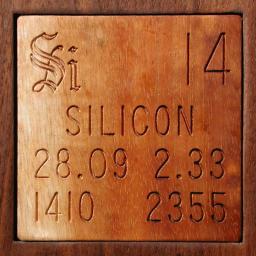Silicon Carbide crystal.
The seller swears on a stack of bibles that this is natural (native) bismuth dug out of the ground in this form from the old Trajos silver mine in Chihuahua, Mexico. Unfortunately, this is not the case. The bluish cast does look very much like the film that forms on high-purity bismuth when it is molten, which may explain the sellers honestly mistaken identification. But this crystal is actually silicon carbide, possibly formed in an iron cupola from a reaction between the coke used to melt the iron and the silica fire brick lining the cupola. Because of the insistence of the seller that it was bismuth I made an effort to be absolutely sure about the identification, which was achieved by an SEM-EDS (Scanning Electron Microscope coupled to an Energy Dispersive X-ray Spectrometer) at the Center for Microanalysis of Materials, University of Illinois (partially supported by the U.S. Department of Energy under grant DEFG02-91-ER45439). The instrument allows one to measure the elemental composition of individual microscopic areas of a sample, in this case the cross section of single dendrite broken off the crystal. It showed a ratio of silicon and carbon consistent with silicon carbide on the inside of the dendrite, with a small component of oxygen found on the surface (and no doubt responsible for the bluish film).
Although this very sophisticated instrument allowed a definitive determination of what the crystal actually is, verifying that it is not bismuth requires no special tools: It doesn't melt. Native bismuth in this form would have been quite remarkable, as no such material is known to exist. But the fact that it's not bismuth in no way detracts from the fact that it's very attractive! It is one of the more beautiful crystals in my collection, and I really could care less where it's from.
Source: eBay seller 4jdk
Contributor: Theodore Gray
Acquired: 28 January, 2004
Price: $95
Size: 4"
Composition: SiC
|
| 
|
|